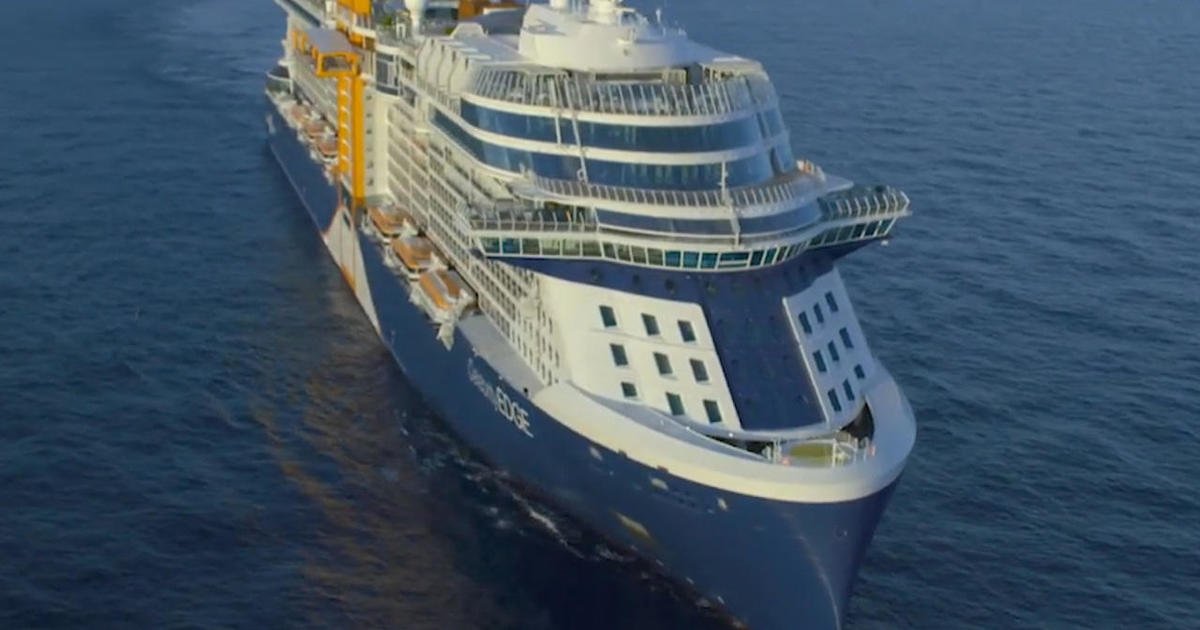Table Of Content

He didn’t have travel insurance so faced paying out of pocket for all expenses. Bruce and his wife didn’t have the required funds and amazingly an anonymous donor donated $20,000 to fly him home. It’s easy for the cruise line to know to find out which passengers the guest was cruising with as they’ll be on the same booking. It’s a little more difficult for them to find out who to inform at home.
Do cruise ships have morgues?
In the case of a death on board, the cruise ship secret code is “operation rising star” which discreetly alerts crew members that a passenger has passed away. This short video features an onboard morgue on the Carnival Fantasy cruise ship (one of the smallest Carnival cruise ships at the time of service). In most cases, a morgue’s located in a hospital, but on a cruise ship, the morgue is typically located at the bottom of the ship, on the lower decks, and away from passengers. While it may not be something you think about when planning your vacation, it’s essential to know what to do in the event of a death while on a cruise ship and whether there is a cruise ship morgue on board. Cruise morgues are stainless steel refrigerated rooms with shelves where bodies are stored, either until the end of the voyage or until they can be disembarked in a port of call and repatriated. Yes, cruise ships have medical facilities that can handle minor surgeries like wound suturing.
Do cruise ships have a mortician?
This blog helps over a million people to plan their cruises each month. She has worked in the cruise industry since 2015 and has taken over 30 cruises. Now, she helps over 1 million people per month to plan their perfect cruise holidays.
Additional Health and Safety Measures for Tourists
However, the real figure is likely to be higher, especially if including deaths that occur at ports of call. If someone dies on a cruise ship the body is placed in a body bag and stored in an onboard morgue that’s usually discreetly located on the lower decks. Arrangements will then need to be made to get the body home, either by return journey or disembarking the body at a port of call. Cruise ships carry millions of passengers each year, and it is not uncommon for deaths to occur on board. Most vessels are required to have a morgue and additional body bags in the event of an emergency. The presence of morgue facilities on cruise ships demonstrates the industry’s commitment to ensuring a safe and respectful environment for all those onboard.
When a Passenger Dies at Sea: What You Need to Know
Compared to other Carnival ships in the 90s, the TSS Carnivale seemed smaller. However, it still offered a variety of amenities and entertainment options. On the TSS Carnivale, there were other entertainment options besides Gary Hunter’s performances. From live music and dancing to comedy shows and game nights, the cruise ship offered a variety of experiences to keep passengers entertained throughout their voyage. The TSS Carnivale, an older cruise ship, has a smaller accommodation capacity compared to today’s ships.
How Many Passengers Does TSS Carnivale Accommodate?
The cruise line's inquiry may differ from federal investigations, with initial findings not always aligning. The investigative process may be triggered by reports from passengers or family members flagging concerning details. It's crucial to note that the cruise line might withhold information that could indicate responsibility in the passenger's death. But it provides necessary facilities in the rare case of a passenger death, allowing the cruise line to properly manage the body on board rather than storing it in a makeshift area. Travel insurance data suggests about three-quarters of cruise ship deaths are from expected natural causes. The morgue on a cruise ship is a very small, clinical room located out of the way from main passenger areas, often on a lower service deck without windows.
What Happens When People Die on Cruises?
Falls from great heights, choking, drowning, suicide, and even murder are all incidents that can occur during your sea voyage. As a tourist planning a trip to the Dominican Republic, I can feel confident knowing that the country prioritizes the safety and well-being of visitors and those involved in the tourism industry. The Dominican Republic has implemented strict safety protocols to ensure a safe tourism experience. These measures are continuously revised to provide necessary facilities for visitors, ensuring their satisfaction.
Jails, Morgues, No Deck 13 - The New York Times on The Hidden Secrets of Cruise Ships - Afloat
Jails, Morgues, No Deck 13 - The New York Times on The Hidden Secrets of Cruise Ships.
Posted: Fri, 19 Apr 2024 09:14:10 GMT [source]
This swift notification ensures that families are promptly made aware of the situation, allowing them to begin making necessary arrangements and decisions. It’s important to note that the specific procedures and policies can vary among cruise lines. Each company has established protocols in place to handle these situations professionally and compassionately.

Operation Rising Star is initiated immediately after medical staff confirm a death on board. Crew members ensure the deceased is handled with respect and care, involving the medical team and security personnel who work together to transfer the body to the ship’s morgue. The morgue, usually a small stainless steel refrigerated room on the ship’s lowest deck, accommodates between two to 10 bodies, depending on the size of the vessel. In most cases, the body will be removed at the next port of call, but sometimes will remain on board until the end of the voyage. The cruise ship morgue is usually a stainless steel refrigerated room where bodies can be stored. They are usually found on the ship’s lowest deck, along the ship-wide corridor known as the I-95.
It's true that major cruise lines have morgues on board, and that's for good reason. Older people spending longer periods of time on cruises means an increased likelihood that some will die of natural causes during their trips. Cruise ships are prepared to handle every situation that can arise, including death. On standard Caribbean sailings, remains are often kept in the cruise ship morgue until the vessel returns to the United States, where a death certificate can be issued by the local medical examiner's office. However, as stated above, port authorities in any of the ports visited by the cruise have the right to require an examination of anyone who's died, as well as the off-loading of the body.
Local port authorities will need to be notified of the death and, depending on the circumstances, this may include medical professionals or law enforcement, who may need to board the ship to assist. If the cause of death isn’t immediately clear, the body will usually be examined by the ship’s doctor, if there is one. It may also be the case that the cruise ship has to miss port spots or that the ship is held and guests are unable to disembark. You may feel as though it isn’t necessary if you’re not going far from home, for example cruising from Miami to the Caribbean but this couldn’t be further from the truth. The code for a serious medical problem is ‘operation bright start’ and the code for death is ‘operation rising star’.
Recent incidents have highlighted the FBI's involvement in cases where deaths raise suspicions, underscoring the importance of a thorough examination. If suspicious circumstances are reported regarding a death on a cruise ship, federal authorities may be called upon to initiate investigations. This could be triggered by reports from passengers or family members, prompting federal agencies to delve into the matter. Ensuring swift and compassionate communication with the family is crucial for cruise lines in providing the necessary support and assistance following a passenger's death.
I'm an ex-cruise ship worker — here's the shocking reason we throw free ice cream parties - New York Post
I'm an ex-cruise ship worker — here's the shocking reason we throw free ice cream parties.
Posted: Wed, 28 Feb 2024 08:00:00 GMT [source]
In these cases, the cruise line will work with the family to find a suitable solution, such as disembarking the body at the next port or arranging for repatriation. If no suspicious circumstances are suspected, it’s time to move the deceased guest from the place of their passing – which comes with a unique set of potential problems. Our source recalls having to ferry a body, on one occasion, from a stateroom to the cruise ship morgue, which is found towards the bottom of the ship by the medical facilities. For the family, the repatriation process involves significant coordination with local authorities to ensure that a death certificate is issued and recognized by the deceased’s home country. Repatriating a body is a complex and costly procedure, often necessitating assistance from embassies and requiring comprehensive travel insurance to manage potential expenses. When someone dies at sea, a trained crisis team will help the deceased’s companions make decisions regarding the logistics of returning the person’s body to the home country so it can be buried.
In conducting its investigation into a passenger's death, the cruise line focuses on protecting its interests and reputation. This process involves close cooperation with authorities, especially in cases where federal investigations are initiated due to suspicions of foul play. U.S. consulates, for example, provide valuable support in managing the legal aspects of repatriation, such as verifying the cause of death and adhering to international and local laws throughout the process. Consular offices serve as essential liaisons in the repatriation logistics, guaranteeing a smooth and lawful return of the deceased individual. Our team conducts a thorough medical examination and meticulously documents all findings following a passenger's death on a cruise ship. In 2001, for example, there were just three passenger deaths and no crew deaths reported, but in 2015 there were 75 passenger deaths and five crew deaths.

There is a rumor which has been circulating for decades about deaths and ice cream on cruises. There aren’t usually specially trained councilors but there are crew members ready to help in the situation of an onboard death. So let’s step inside this rarely-seen part of a cruise ship’s anatomy. While a morgue may seem like a grim necessity, it’s a vital facility that allows cruise lines to operate in a safe and lawful manner.
Little did I know then, those initial hesitant steps I took would transform into confident strides as I became accustomed to the sea’s cadence. As we reflect on Cassidy Gifford's journey to becoming Carnival's newest godmother, we can't help but feel a sense of pride and excitement for what lies ahead. Carnival Glory, the ship in question, was launched in 2003, making it 15 years old when Cassidy Gifford became Carnival Celebration's Godmother. We cruised with Carnival for nearly two decades, enjoying renovations and updates. We are thrilled to share that Queen Latifah is the Godmother of Carnival Horizon.


No comments:
Post a Comment